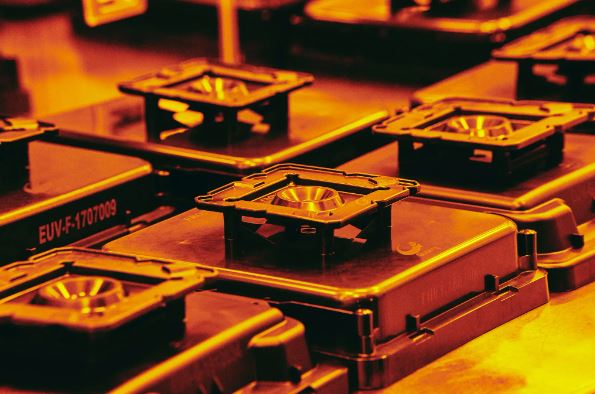As the United States and China continue to grapple with a technological and geopolitical rivalry, one of the central battlegrounds in this high-stakes conflict is emerging: complex lithography machines used in the production of computer chips. These machines are pivotal in China’s efforts to develop its domestic chip-making industry. However, China does not yet possess the technology to manufacture these advanced lithography machines. In response to this challenge, U.S. officials recently imposed restrictions on the export of certain chip-making machines to China, unless companies obtain a special license from the U.S. government. This move could significantly impede China’s ambitions in chip manufacturing and underscores the United States’ determination to maintain its competitive edge in the semiconductor industry.
This new policy has far-reaching implications, as it enables U.S. officials to exert influence over companies based in the Netherlands and Japan, where some of the most advanced chip machinery is manufactured. The primary focus of these restrictions is the use of deep ultraviolet (DUV) technology, which is mainly produced by the Dutch company ASML. ASML’s lithography machines play a dominant role in the global chip-manufacturing market.
China’s quest to enhance its semiconductor industry is driven by the desire to reduce its reliance on foreign technology, particularly amid concerns about U.S. restrictions on the export of advanced chips. The semiconductor industry is essential for the development of emerging technologies, including artificial intelligence, 5G networks, and advanced military systems. To bolster their position in this critical arena, China seeks to strengthen its chip-manufacturing capabilities.
ASML, the Dutch company that stands at the heart of this controversy, has cooperated with the U.S. regulations, but not without resistance. ASML has faced previous limitations on exporting advanced lithography machines to China. The company is careful in its response, emphasizing its compliance with all laws and regulations in the countries in which it operates. However, these restrictions have resulted in the loss of significant sales for ASML. As Peter Wennink, the CEO of ASML, stated, it has cost them business opportunities in 2024.
While the focus of these restrictions has been on ASML’s DUV technology, they are part of a broader push by the United States to maintain an edge in the semiconductor sector and safeguard its technological superiority. Even though China has been investing heavily in its domestic semiconductor industry, it remains several years behind the most advanced suppliers in the market, such as ASML, Applied Materials, and Lam Research in the United States, as well as Tokyo Electron and Canon in Japan. The United States and its allies see their technological advantage as a strategic asset in maintaining their military and economic superiority, particularly in the current era of tech-driven warfare.
However, this effort to curb China’s technological progress is creating strains within international alliances. While European governments largely share the U.S. perspective on the geopolitical and economic threats posed by China, they remain cautious about undermining their own companies’ interests in the lucrative Chinese tech market. In particular, Dutch technology has been under pressure from the United States for years, with efforts dating back to the Trump administration to prevent the export of ASML’s advanced machines to China.
The U.S. has been pushing for export controls that would prevent China from obtaining cutting-edge technology, but recent events have intensified these efforts. In August, Chinese telecom giant Huawei released a smartphone containing a domestically produced chip featuring transistor dimensions of just seven nanometers. This significant technological advancement, facilitated by ASML’s deep ultraviolet lithography machinery, highlighted the urgency of U.S. actions.
These new export controls may not immediately cripple China’s most advanced chip manufacturers, as they have already stockpiled substantial advanced machinery. Nevertheless, these controls will significantly restrict their ability to produce cutting-edge semiconductors, like seven-nanometer chips. This development aligns with the United States’ broader strategy to safeguard its technological leadership and maintain control over critical technology in a fiercely competitive global landscape.
While the semiconductor industry continues to be a focal point in the ongoing U.S.-China tech conflict, the path forward remains uncertain. The consequences of these export controls are felt on a global scale, as they impact both American and international businesses operating in the chip manufacturing sector.
In conclusion, the control over advanced chip-making machinery is a pivotal battleground in the U.S.-China technological conflict, with potential far-reaching implications for the global tech industry. The restrictions imposed by the United States on exporting these machines to China underscore the importance of maintaining technological leadership in the semiconductor sector and the determination of both nations to secure their positions in the evolving tech landscape. The consequences of this battle extend beyond the U.S. and China, impacting international businesses, alliances, and the broader trajectory of the tech industry.

